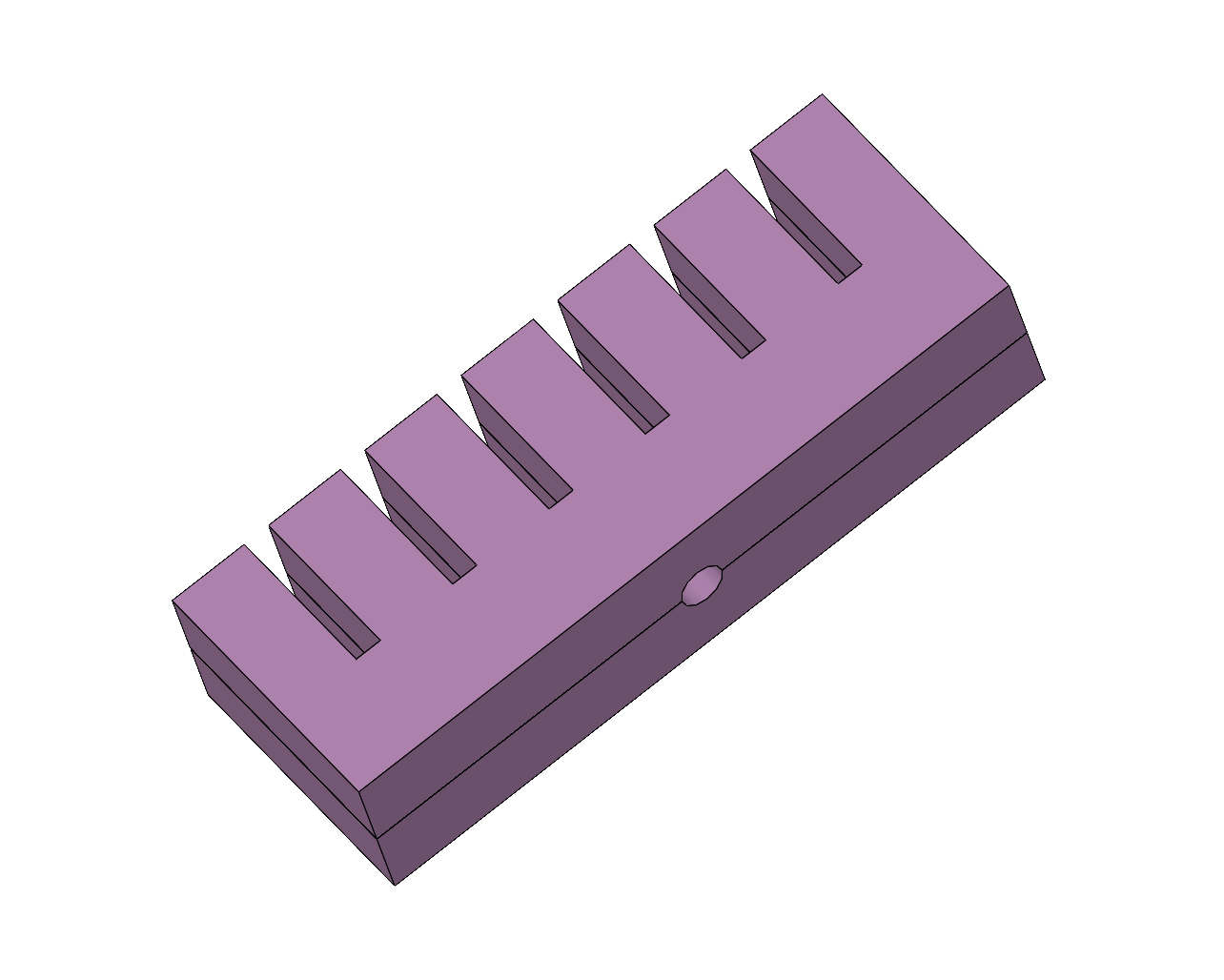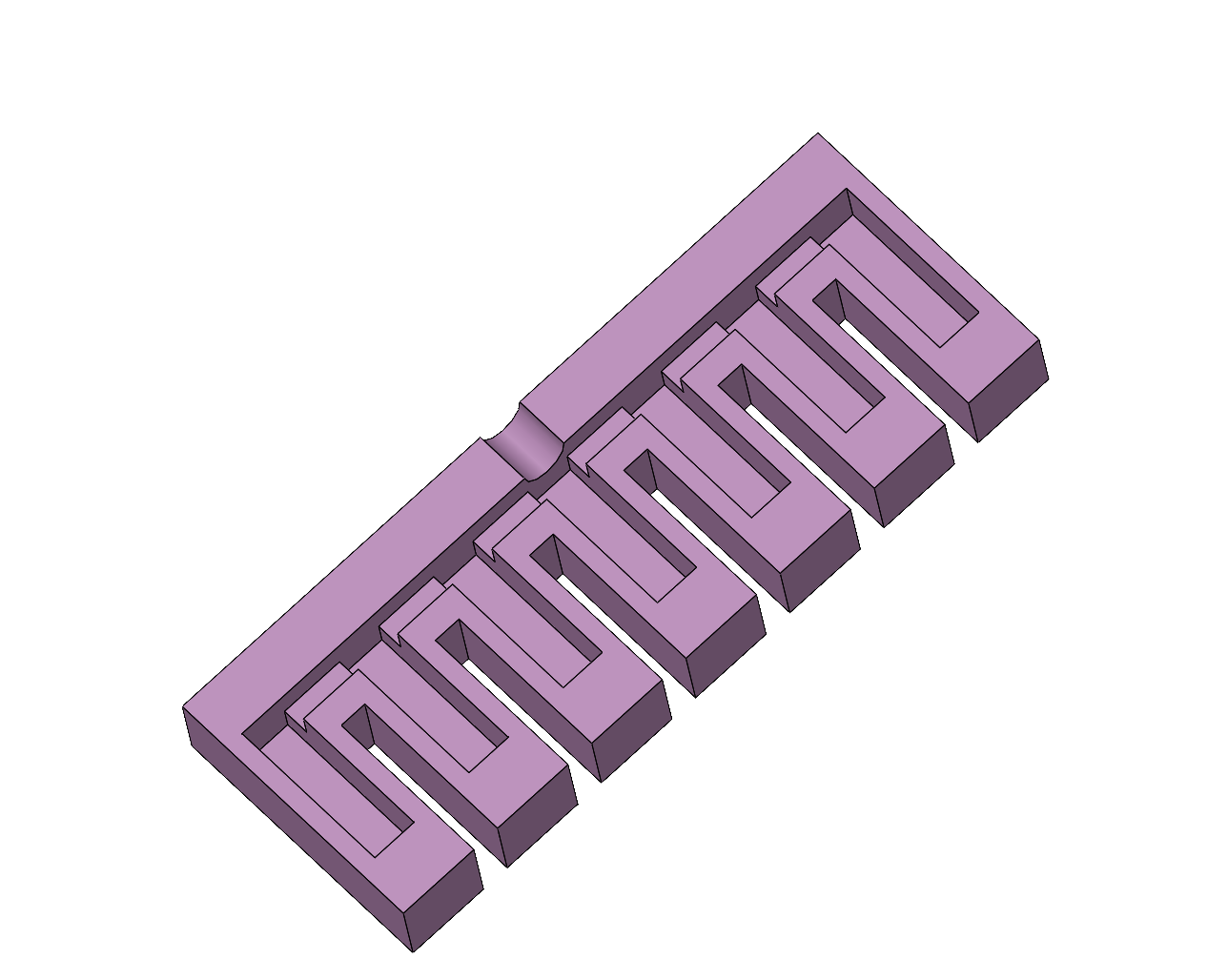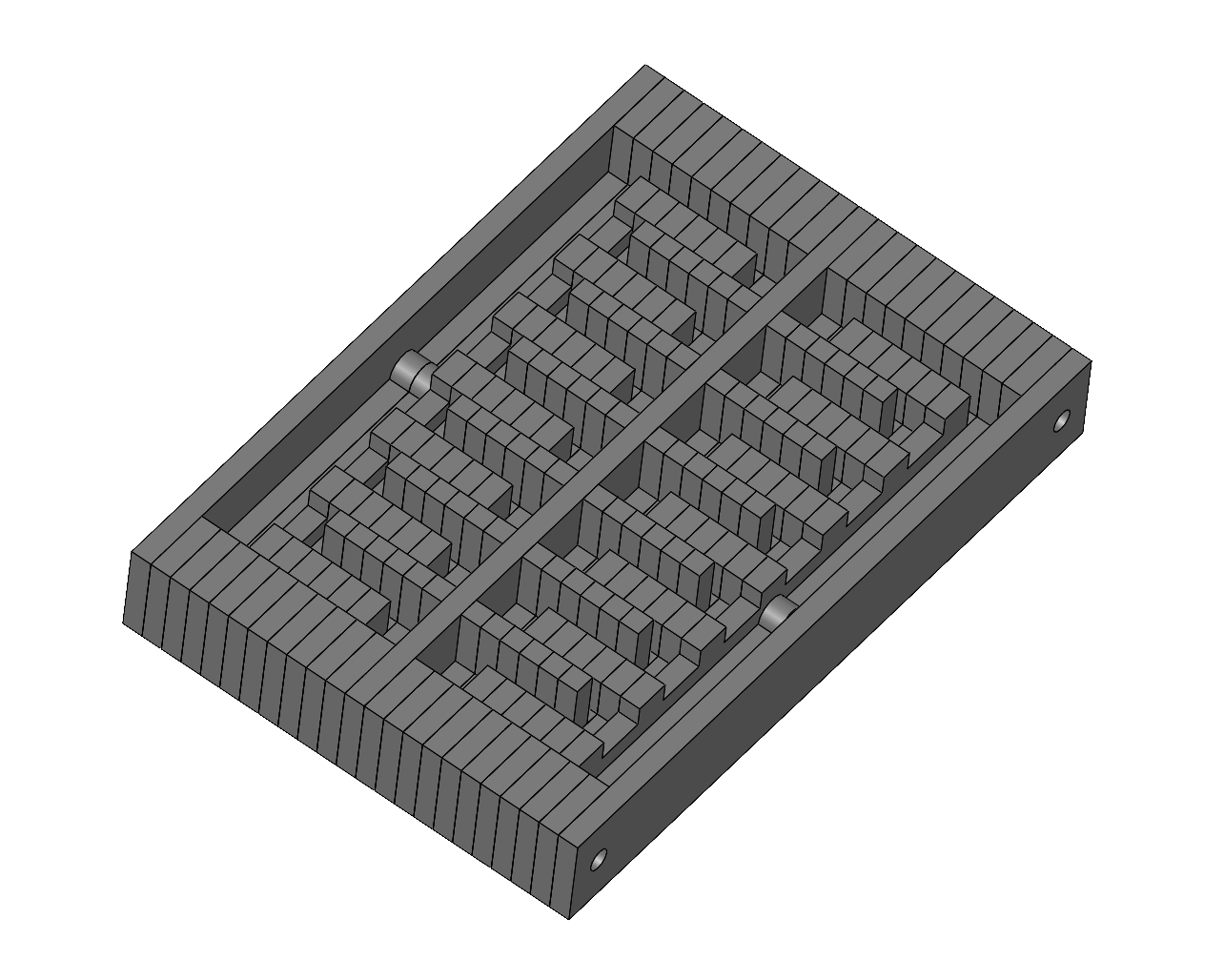Design Example: Laser-Cut Open Mold¶

This sample demonstrates the design of a basic silicone pneumatic-net actuator [R28] fabricated using an open mold fabricated from laminations of laser-cut 3 mm acrylic.
The SolidWorks model files and STL 3D printing fabrication files may be found in the SolidWorks/finger-test-3 folder, or may be downloaded as a single file as finger-test-3.zip.
SolidWorks Design Workflow¶
The part was modeled with internal inflation cavities. The outer faces are flat as they will be formed by the open top of each mold. Features were modeled on a 3 mm grid across the short axis in order for the mold to be divisible into 3mm laser-cuttable sections.
A splitting plane was selected along the centerline of the tubing port. The split surfaces should be concave with no overhangs, as they will be each formed by a mold. Each half was saved into a separate (derived) part file.
For the dual-cavity mold:
The mold blank was modeled as a block larger than the part to fabricate.
As assembly was created using the mold blank.
Each half of the silicone part was added to the assembly with mates to align inside the mold part.
The mold part was edited in the assembly context and Cavity feature added to subtract the parts.
The mold part was split into separate 3 mm slices for fabrication.
The slices were placed within a layout assembly.
The layout assembly was placed in a drawing file.
The drawing was exported as DXF for laser-cutting.
Please note that the design is associative: changes to part geometry will propagate to the mold cavities when the mold assembly files are reloaded and rebuilt, and new mold STL files may then be exported.
Other Views¶

Rendering of cross-section showing the width of the internal cavities.¶

Rendering of mold showing slices.¶